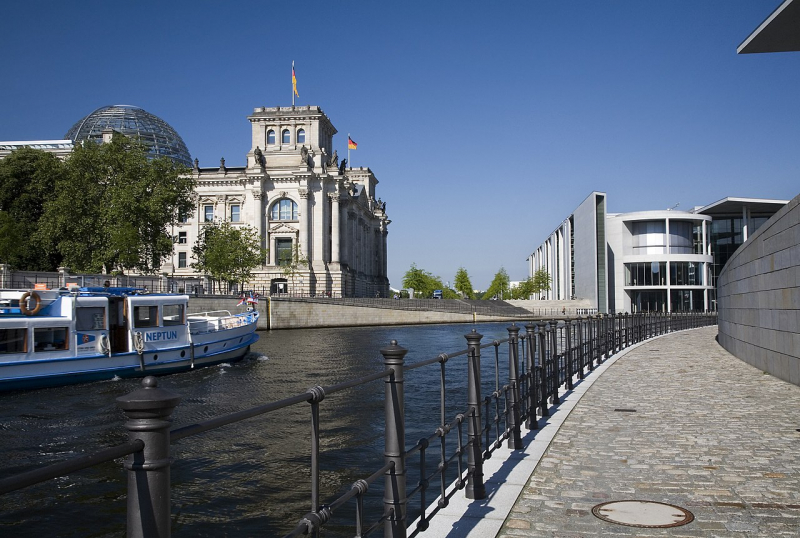Spree River
With a length of about 400 kilometers (250 miles), the Spree River is the main tributary of the Havel River. The Spree is significantly longer than the Havel, into which it flows at Berlin-Spandau; the Havel then flows into the Elbe at Havelberg. The river begins in the Lusatian Highlands, which are part of the Sudetes, in the Lusatian part of Saxony, where it has three sources: the historical Spreeborn in Spreedorf, the water-richest one in Neugersdorf, and the highest elevated one in Eibau. The Spree then flows north through Upper and Lower Lusatia, where it crosses the Saxony-Brandenburg border. It forms the Spree Forest, a large inland delta and biosphere reserve, after passing through Cottbus. It then flows as Müggelspree through Lake Schwielochsee before entering Berlin.
The Spree is the main river of Berlin, Brandenburg, Lusatia, and the Sorb settlement area, which they call Sprjewja. The Spree, as Spréva, forms the border between Germany (Saxony) and the Czech Republic for a very short distance close to its sources (Bohemia). Dahme (confluence in Berlin-Köpenick) and Schwarzer Schöps (confluence in Sprey) are the Spree's longest tributaries; other well-known tributaries (because they are Berlin rivers) are Panke and Wuhle.
Location: Czech Republic-Germany
Length: 400 km (250 mi)











